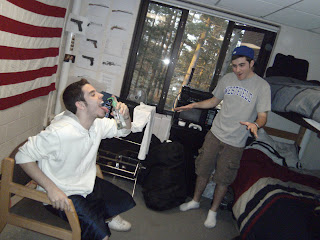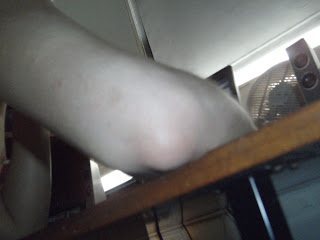A very common greeting, the high five, is seen here between a male and female on the campus green. This greeting was probably taking place in a friendly manner between the male and female.
Once again, here is another greeting occurring between two people of opposite sex. It seems that handshakes and high fives take place more amongst acquaintances.
Here is a friendly wave from two gentlemen in the hallway. Take notice in the lack of contact as the two males greet one another.
Here, yet again, is another example of a non contact greeting between two males through the use of waving.

Men will also use pointing gestures to greet one another.
Another greeting with minimal contact between males is the head nod. (This was taken just after a nod; I just missed capturing it)
The closest contact I've observe with males during greetings were daps. This is somewhat of a handshake with different variations to it. Some guys like the ones above will bring it in for a hug occasionally.
Another form of daps is the fist pound.
Here, a male seen previously in an above photograph giving daps to another male has changed his greeting style when a female is present. Here, he is making more contact and may be using pickup lines or any other types of flirtation devices.
The two girls seen here are greeting each other at a party I attended. They use show more emotion and use more contact than do males with other males.
Once again, another pair of females using the physical greeting of hugging upon seeing one another at lunch.
At another party I attended, these girls kissed each other on the cheek upon seeing each other. This was perhaps the greatest evidence I have found that exhibits how females are open to more contact than males when greeting someone of the same sex.





























